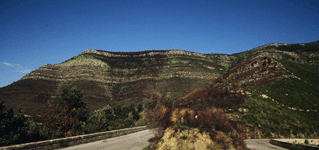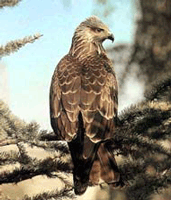 In terms of vegetation, the territory is largely covered by forests that only in zones at lower altitude give way to olive growing, while in the area of the summit more sparse trees and shrubs are found, consisting of alders, also of considerable size, and Crataegus monogyna. The forests consist mainly of chestnut trees, at lower altitudes are placed holm-oak woods, often mixed with downy oak and flowering ash. The presence of the oak, some time ago certainly more widespread, is limited to a few areas. In the SCI, there are also thermo-Mediterranean shrubs, characterized by different species such as the strawberry In terms of vegetation, the territory is largely covered by forests that only in zones at lower altitude give way to olive growing, while in the area of the summit more sparse trees and shrubs are found, consisting of alders, also of considerable size, and Crataegus monogyna. The forests consist mainly of chestnut trees, at lower altitudes are placed holm-oak woods, often mixed with downy oak and flowering ash. The presence of the oak, some time ago certainly more widespread, is limited to a few areas. In the SCI, there are also thermo-Mediterranean shrubs, characterized by different species such as the strawberry  shrub, space hairy cicerchia of Jordan, mastic, heather, myrtle, etc., while the garrigue is characterized by ampelodesmeti, broom and juniper. There are even mountain grasslands and xeric Mediterranean, characterized by numerous herbaceous species such as the star of Calabria, the 'columbine, mullein, the crest of Wettstein, the pin of the Cilento, the fescue of Calabria, the rare Crespino of Etna and many species of clover and grasses, as well as numerous wild orchids of the genus Orchis and Ophrys. With regard to the avifauna, we can say that the total species known so far for the SCI are 119, of which 22 are listed in Annex I of the Birds Directive and 57 are nesting on the site. Among the migratory birds of prey, stand the presence of black kite, hen harrier, peregrine falcon and minor eagle; between species related to wetlands (not in the SCI, but in its closeness at the Alento and his dam) is detected instead the presence of the crane, marsh harrier, the osprey and the black stork. shrub, space hairy cicerchia of Jordan, mastic, heather, myrtle, etc., while the garrigue is characterized by ampelodesmeti, broom and juniper. There are even mountain grasslands and xeric Mediterranean, characterized by numerous herbaceous species such as the star of Calabria, the 'columbine, mullein, the crest of Wettstein, the pin of the Cilento, the fescue of Calabria, the rare Crespino of Etna and many species of clover and grasses, as well as numerous wild orchids of the genus Orchis and Ophrys. With regard to the avifauna, we can say that the total species known so far for the SCI are 119, of which 22 are listed in Annex I of the Birds Directive and 57 are nesting on the site. Among the migratory birds of prey, stand the presence of black kite, hen harrier, peregrine falcon and minor eagle; between species related to wetlands (not in the SCI, but in its closeness at the Alento and his dam) is detected instead the presence of the crane, marsh harrier, the osprey and the black stork. |
|
